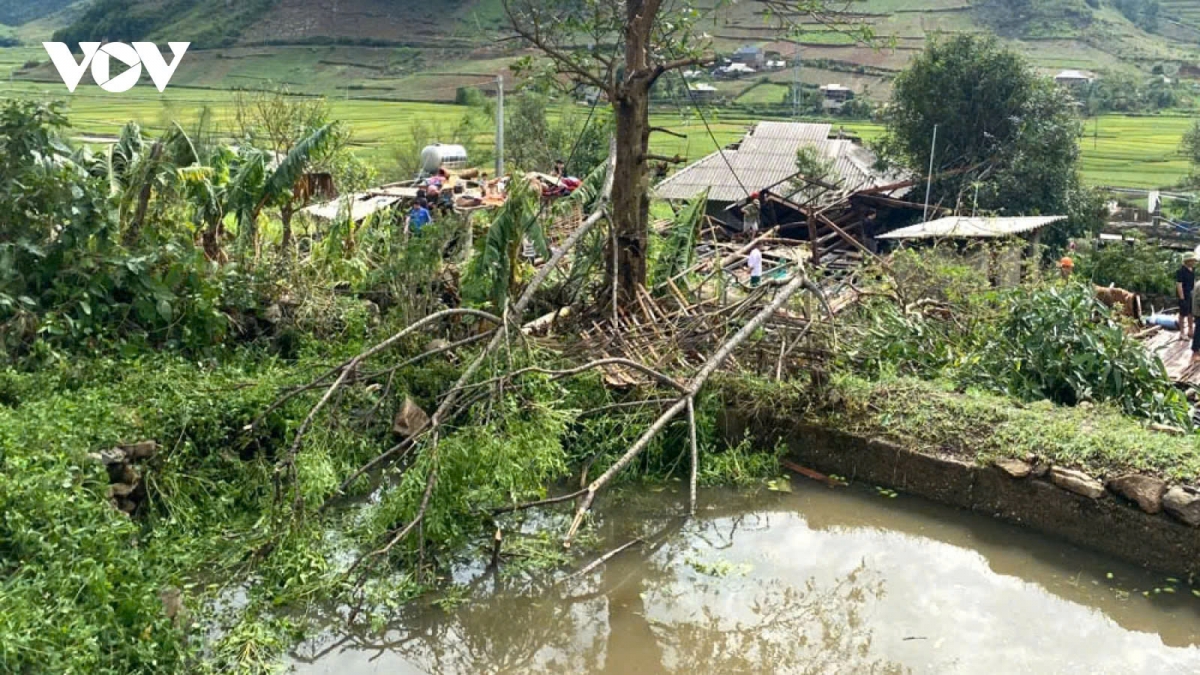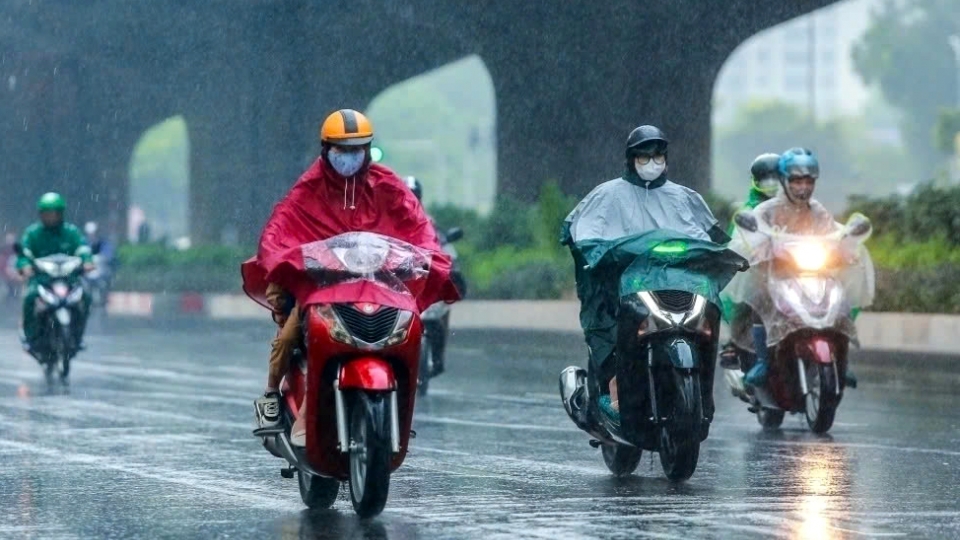Heavy rain wreaks havoc across Vietnam, leaving two dead, crops destroyed
VOV.VN - A cold air mass combined with an upper-level wind convergence zone has caused heavy rain and thunderstorms in many Vietnamese localities over the past few days, resulting in human casualties and damage to housing, agriculture, and infrastructure.

According to preliminary reports from the provinces, heavy rain and thunderstorms on May 9 - 10 left 2 dead, 1 missing, and 1 injured, along with dozens of houses damaged or having their roofs blown off.
In the northern mountainous province of Lao Cai, one person died due to landslides and flash floods in Bat Xat district. Meanwhile, heavy rain early on May 11 caused flooding in some neighborhoods and roads in Son La city. Local residents stayed up all night to remove water and protect belongings.
Torrential rains and strong winds also wrought havoc across Tuyen Quang and Hoa Binh provinces in the north-western region, with dozens of houses having their roofs blown off.
Elsewhere, thunderstorms accompanied by strong winds in the central provinces of Quang Binh, Ha Tinh, and Nghe An flooded and flattened over 1,600 hectares of rice fields, with many areas nearing harvest at risk of total loss.
Quang Binh was the hardest hit locality with more than 16,000 hectares of rice and subsidiary crops affected by the thunderstorms. The authorities recommended that farmers harvest ripe rice quickly and drain water to prevent prolonged flooding, which could cause the rice to sprout.
Heavy rain also flooded many roads and residential areas in some southern localities, including Ho Chi Minh City and Binh Duong province, disrupting traffic and daily life. A worker was washed away by floodwaters at a drainage project site in Tan Uyen city of Binh Duong province.
Meteorologists warn as the season transitions, extreme and unusual weather events such as thunderstorms, hail, lightning, flash floods, and landslides pose significant risks that directly impact people, property, and crops.
To proactively prevent and mitigate the impact of potential natural disasters, local authorities should direct communities to secure their homes, trim trees that could pose hazards to residences, infrastructure, and transportation, and reinforce protective measures to minimise damage.





